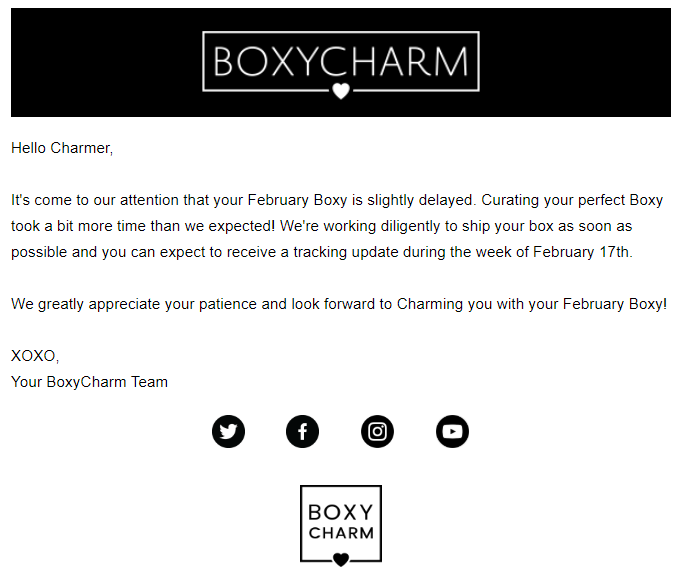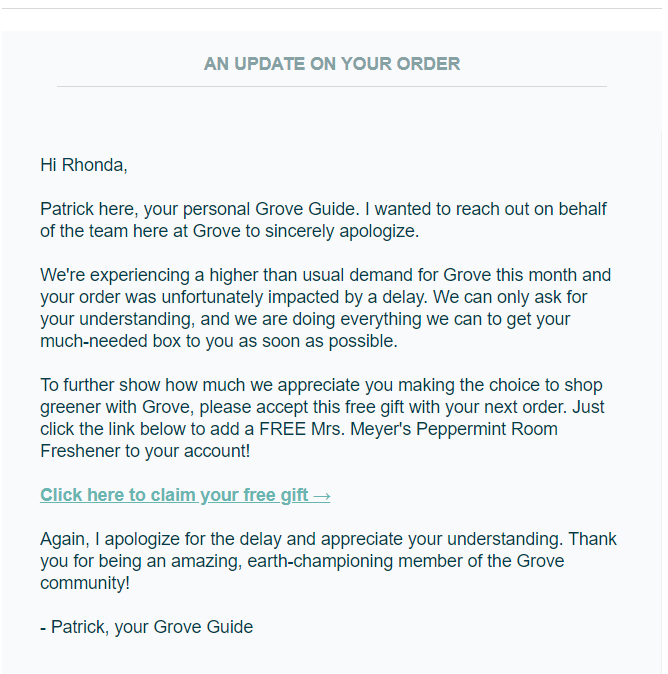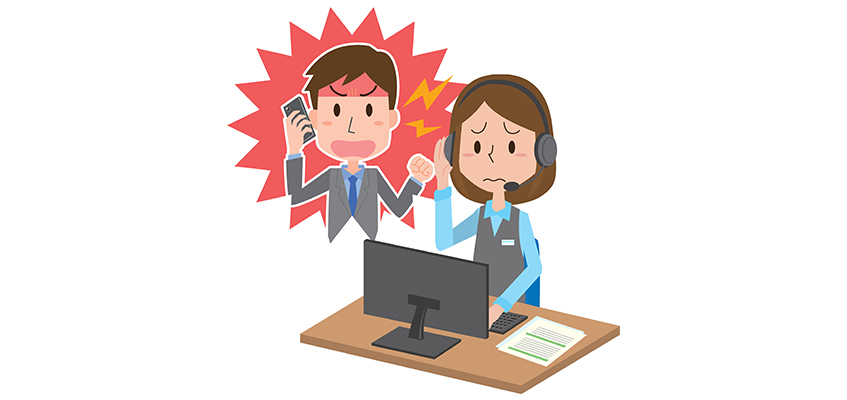Late delivery incidents are frequent, almost inevitable, and happens primarily because of shipping carriers failing to keep up with their promises of on-time delivery despite their busy schedules during times like the holiday season and while facing supply chain disruptions.
As an e-commerce retailer, it makes sense to take a look at how late deliveries can be problematic to you.
- Up to 10% of parcels are delivered late during the holiday season
- Nearly half of consumers (45%) say they are unlikely to continue ordering from a company even after just one instance of late delivery
- Frustrated customers with delayed holiday gifts will take their frustrations to social media and demotivate others from shopping with you.
On-time deliveries, though, aren’t always within a business’s control. And avoiding customer concerns and complaints when they question you about a late delivery only makes matters worse.
So, here are 4 tips for how you can respond to customers after a late delivery and focus on doing long-term business with them even after a poor delivery experience.
How to respond to customers after a late delivery in 2022
1. Be Honest about Your Capabilities
Don’t put your company in a situation where late deliveries are common because you’re stretching your shipping resources too thin.
Provide customers with realistic shipping times, even if that means your competitors can deliver quicker.
Quick shipping is an attractive benefit to consumers, but knowing when to expect their deliveries is far more important.
Be honest with your customers about how quickly you can deliver an item. You risk damaging your relationship with them if you can’t fulfill your deliveries on time.

2. Be Transparent about Delays
Even if the reason for the late delivery is not your fault (when it’s due to weather or other unforeseen events), acknowledge the delay and contact your customer immediately.
Your customers already hold you accountable for late deliveries and even go to the extent of stopping doing business with you, so why not take responsibility for it and try to ease their frustrations? Also, customers are more forgiving when you’re transparent about the reasons for the delay and the adjusted shipping dates.
For example, Boxycharm women’s subscription box sends out its products in the early part of each month. Its subscribers look forward to receiving their boxes and complain loudly on social media when boxes don’t arrive on time.
When Boxycharm learned there would be a 2-week shipping delay due to product shortages, it notified customers of the delay immediately and told them exactly when to expect their shipments.

While nobody’s happy about receiving a late delivery, consumers do understand that weather emergencies and product shortages can cause delays.
When you let them know about a late delivery in advance, they’re less disappointed and more likely to forgive the problem.
3. Be Generous with Your Time and Compensation
According to an online shopping study, 90% of consumers complain publicly or privately, online and offline, after a late delivery or other bad delivery experiences.
Negative comments on social media aren’t always bad for your brand, though. People view brands more positively when they respond to negative comments. This gives you the chance to win back your original customers and visitors who are reading through your comments and reviews.
Thank complaining customers for their input, and let them know that you value your business and are making every effort to ensure late deliveries don’t happen again in the future.
Many businesses ask unhappy customers to message them privately, and frequently this means they’ll offer some compensation for their inconvenience.
Offering a credit, shipping refund, or free gift to customers whose deliveries are late shows that you value their business. These types of small gestures can help you retain customers who otherwise may not return.
For example, when Grove Collaborative experienced a significant shipping delay with its products, it emailed customers with an explanation, sincere apology, and free gift offer.

By offering a free gift with the next order, Grove increased its chances of customers returning to place an order in the future.
4. Be Proactive and Try Your Best to Resolve the Impact of a Late Delivery
Late deliveries are common and inevitable, yes. But what if there was a way for you to step in before your customers have been impacted by them?
This is where a real-time parcel tracking solution can come in handy.
With the ability to track all your parcels across carriers, geographic locations in real-time, get predictive alerts and flag shipments that seem to be staying behind on schedule. You can then enable your customer support team to intervene and fix the issue before it impacts your customer.
When your customer’s order is facing weather-related exceptions, you can send automated and timely notifications that are customized to the specific situation to keep your customers informed of what’s been happening with their parcels and ease their anxiety.

Even if the issue goes unresolved, your commitment towards taking proactive action can help you strengthen customer relationships and build rewarding delivery experiences.
Communication Can Help Retain Customers Who Experience Late Deliveries
Approaching your shipping operations from a customer-centric perspective helps retain customers in the case of late deliveries or shipping malfunctions.
Your company risks losing customers when shipments are behind schedule.
By communicating in a way that’s honest, transparent, and generous, you can significantly increase the chances of keeping your customers despite a poor delivery experience.
This Artilcle is a contribtion by Riley Panko

Riley Panko is a Marketing Communications Manager for Clutch, a B2B research, ratings, and reviews platform. Clutch helps business buyers make informed decisions about partnering with a business services or technology solutions partner.
Frequently Asked Questions (FAQs) Around Late Deliveries
1. How do you respond to a customer complaint about late delivery?
- Be honest with your customers about your capabilities on how quickly you can deliver an item
- Notify customers of the delay immediately and tell them when to expect their shipments
- When customers who have experienced a shipping delay, write a sincere apology and offer them coupons for discounted prices on their next purchase
- Send regular, personalized notifications that are tailor-made to the specific situation to keep your customers informed of what’s been happening with their parcels and ease their anxiety.
2. How do you apologize for delayed customers?
Acknowledge the delay and explain what really went wrong to your customers, offer them a list of solutions and let them choose what’s best for them and provide discounts such as free shipping/ reduced prices on their next delivery.
3. What causes late delivery of products?
The most common reasons for late deliveries are transit confusions due to human error, delivery exceptions such as failed deliveries, poor warehouse management, lack of coordination among the people involved, customs issues (for international shipments), acts of gods such as weather changes or natural calamities, etc. Also delays are more common during the holiday season when shipping carriers are operating beyond threshold.






